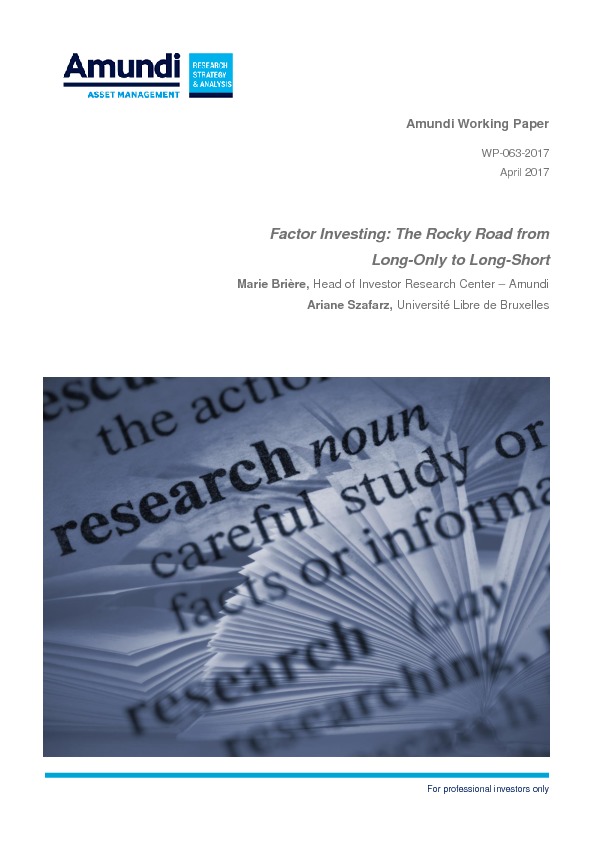

Factor investing has emerged from the asset management world as the new paradigm for long- term investment (Cazalet and Roncalli, 2014; Jurczenko et al., 2015). It attracted fresh interest after the publication of a report on active portfolio management, produced by Ang et al. (2009) at the request of the Norwegian sovereign wealth fund. The first risk factor to be identified is the market factor, which delivers the so-called market premium. According to the capital asset pricing model (CAPM), the market premium is the only risk premium available to investors. However, a host of empirical work has uncovered additional factors that entail significant risk premia. The best-known of these relate to growth and value (Fama and French, 1992) and momentum (Carhart, 1997). Factor investing exhibits a remarkable propensity to beat the market in terms of enhancing expected returns for a given level of volatility. According to Israel and Moskowitz (2013), and Asness et al. (2014), both the long and short legs of factors contribute to overall financial performance.1 Brière and Szafarz (2016) compare optimal portfolios made up of either the ten sector indexes in the Standard Industrial Classification (SIC) system, or the five long legs plus the five short legs of the factors proposed by Fama and French (2015). The results of that comparison suggest that the dominance of factor investing over sector investing relies on the possibility to make short sales. However, a sizeable literature on portfolio management suggests that shorting regularly to rebalance portfolios is difficult. The aim of this paper is to assess the actual dependence of the mean-variance performances of factor investing on short- selling restrictions.





